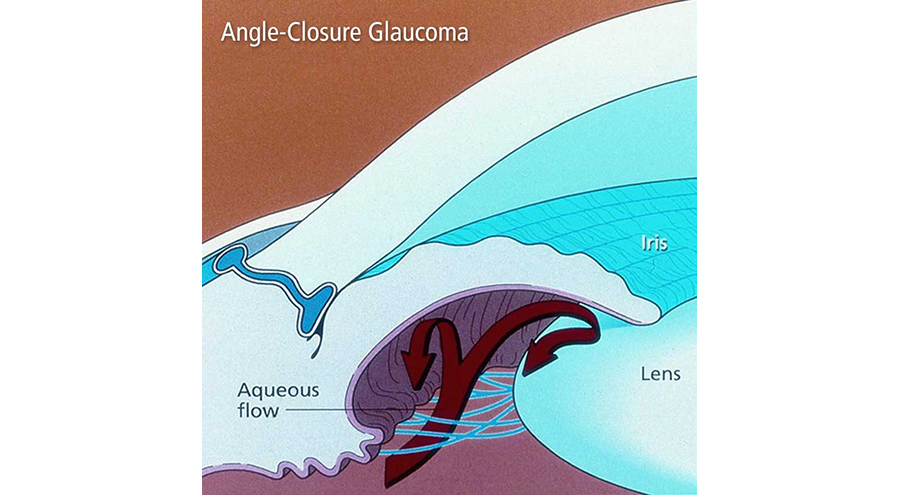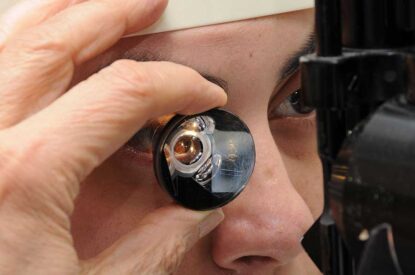Angle-Closure Glaucoma
What is Angle-Closure Glaucoma?
Angle-closure glaucoma is a type of glaucoma where the iris bulges. The bulging iris partially or completely blocks the drainage angle and as a result, fluid can’t circulate through the eye and pressure increases.

Angle-closure glaucoma can take the form of acute angle-closure glaucoma or narrow-angle glaucoma. You may also hear people refer to angle-closure glaucoma as closed-angle glaucoma. It may occur suddenly or gradually. Closed-angle glaucoma is much more rare and is very different from open-angle glaucoma, in that the eye pressure usually rises very quickly.
With angle-closure glaucoma, the iris is not as wide and open as it should be. The outer edge of the iris bunches up over the drainage canals, when the pupil enlarges too much or too quickly. This can happen when entering a dark room. A simple test can be used to see if your angle is normal and wide or abnormal and narrow.
Narrow-Angle Glaucoma Video
This video provides a brief introduction to narrow-angle glaucoma, also called angle-closure glaucoma or closed-angle glaucoma.
Treatment
Treatment of angle-closure glaucoma usually involves either laser or conventional surgery to remove a small portion of the bunched-up outer edge of the iris. Surgery helps unblock the drainage canals so that the extra fluid can drain.
If you have angle-closure glaucoma in one eye, doctors may go ahead and treat the other eye as a safety measure.
In general, surgery for angle-closure glaucoma is successful and long lasting. Regular checkups are still important though, because a chronic form of glaucoma could still occur.
Learn More


